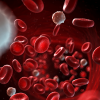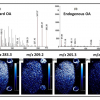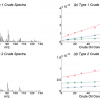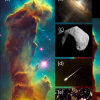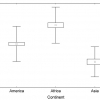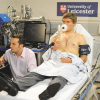David Smitha,c and Patrik Španěla,b,c
aInstitute for Science and Technology in Medicine, School of Medicine, Keele University, Thornburrow Drive, Hartshill, Stoke-on-Trent ST4 7QB, UK
bJ. Heyrovský Institute of Physical Chemistry, Academy of Sciences of the Czech Republic, Dolejškova 3, 182 23, Prague 8, Czech Republic
cTrans Spectra Limited, 9 The Elms, Newcastle-under-Lyme, Staffs, ST5 8RP, UK
Introduction
The requirements of gas analysis are being met by a very wide variety of techniques capable of detecting and quantifying trace components of air and other gaseous media that are present at parts-per-billion, ppb, and even parts-per-trillion, ppt. In the forefront of these remarkable advances has been gas chromatography (GC) coupled with various detection techniques, paramount amongst which is mass spectrometry (MS), realising the well-known and invaluable GC-MS technique. In GC-MS a gas sample is introduced into a carrier gas, usually helium, passing through a temperature controlled column and the separated component gases elute at the end of the column at different times and are analysed individually by the mass spectrometer. GC-MS remains the analytical method of choice for complex mixtures composed of perhaps hundreds of compounds. Yet this important analytical method has a downside in that real-time immediate analyses are not feasible, since elution times are, at best, measured in seconds and more commonly in minutes, and sample collection or extraction is required that, for example, involves the trapping of the trace gases from the sample onto sorbent material with subsequent release into the GC column. Such collection techniques can modify the sample and diminish the accuracy of analysis. When absolute quantification by GC-MS is required then quantitative standards must be used for each compound of interest. Further to this, most GC columns do not take kindly to the presence of water vapour in a sample and this usually has to be removed before analysis, which can also compromise the sample, especially of water soluble trace gases.
These comments are not intended to diminish the image or utility of this most valuable analytical technique, but rather they are intended as a background to the discussion of selected ion flow tube mass spectrometry, SIFT-MS, that we conceived primarily as a real-time, absolute, analytical technique that can meet the challenge of the immediate analysis of humid exhaled breath for rapid clinical diagnosis and therapeutic monitoring. This objective has certainly been achieved and the application of SIFT-MS has quickly been expanded into many other areas where real time, immediate analyses of trace compounds in air are desired, as we have demonstrated in recent reviews1,2 and which we summarise at the end of this article.
Principle of SIFT-MS
The essence of the SIFT-MS technique for real-time trace gas analysis (as described in detail in recent reviews1,3) lies in the introduction of the air/breath sample to be analysed into a helium carrier gas in a flow tube at a controlled rate, where the composite gases in the sample react with one of three precursor ion species, H3O+, NO+ or O2+, which can be selected individually and introduced into the helium carrier gas. This is shown schematically in Figure 1. These ion/molecule reactions result in product ions that characterise the neutral component molecules (analytes) present in the air/breath sample, and these characteristic ions are monitored using a downstream mass spectrometer/ion counting system. Absolute concentrations of analytes are accurately calculated in SIFT-MS from the count rates of characteristic product ion and precursor ion using the well-defined reaction time and the known rate coefficients, k, for the ion/molecule reactions.1 The k values and the product ions for reactions of the three available precursor ions with many volatile organic compounds (and an appreciable number of inorganic compounds) have been measured using the SIFT technique under the very conditions of the flow tube reactor, i.e. in a thermalised ion swarm in helium carrier gas at 300 K, a crucial point that is not normally performed with other flow/drift tube techniques such as proton transfer reaction mass spectrometry (PTR-MS) which can lead to inaccurate analyses. The kinetic data obtained from these SIFT measurements form the kinetics library that allows immediate quantification of the composite compounds of the sample.

The time response of the SIFT-MS instruments is very short (milliseconds); thus, several compounds can be analysed simultaneously in a few seconds in real time, allowing the composition of ambient air to be monitored continuously and single breath exhalations to be analysed on-line and in real time, as illustrated later, the data then being immediately available to the clinician/scientist. The dynamic range of the analysis is very wide; water vapour and carbon dioxide present at a few percent of exhaled breath and trace gases present at the ppb level can be measured simultaneously. Sample data are shown in Figure 2. These data were obtained by focusing on specific breath metabolites by switching the analytical mass spectrometer between appropriate characteristic ions formed in the reactions of the chosen precursor ion species with the particular trace molecules. This is the so-called multiple ion monitoring, MIM, mode of SIFT-MS. These data well demonstrate these extraordinary features of on-line SIFT-MS analyses of ambient air and exhaled breath.

Breath analysis
As mentioned above, SIFT-MS has been applied to the analyses of biological volatile organic compounds in various media, including the headspace of humid samples such as urine and cell cultures,1,2 but here we focus on real-time breath analysis since this was the prime motivation for the initial development of SIFT-MS and perhaps offers the greatest analytical challenge. Using the MIM mode we have carried out studies of the levels of several metabolites in the exhaled breath of many healthy volunteers to establish “reference ranges” of these particular metabolites as a prelude to studies of these same metabolites and others, including breath biomarkers of disease with the support of patients with particular diagnosed diseases. From such studies the level distributions of various volatile metabolites have been constructed for significant cohorts of healthy individuals over various age ranges. As an example, population distributions of the breath acetone levels obtained for cohorts of healthy volunteers over the wide age range 4–83 years4 are shown in Figure 3. What is immediately evident in Figure 3 is that the level distributions are quite wide and that the exhaled breath acetone levels depend somewhat on age. These distributions are approximately log normal, as is the case for most of the breath metabolites that we have studied in sufficient detail.3 Clearly, this spread in breath levels for ostensibly healthy individuals needs to be appreciated when searching for abnormalities/elevations in diseased states such as diabetes for which breath acetone is often considered as a biomarker, even though this has not been established by careful clinical trials.

These studies and several others have demonstrated that non-invasive breath analysis by SIFT-MS is both quick and painless and is very acceptable to very young children (see inset to Figure 2) and frail elderly patients alike. The very rapid time response of SIFT-MS instruments, and the real-time facility that it offers for the analysis of single breath exhalations in sequence, allows the study of pharmokinetics following drug or substance ingestion. Such has been well demonstrated by the detailed study of the metabolism of ethanol and its conversion to acetaldehyde.5
Differences in oral and nasal exhalations
A potential source of concern in breath analysis has been that trace compounds/metabolites present in breath exhaled via the mouth (by which the great majority of breath analyses have been carried out to date) can partially or totally originate in the oral cavity (due to bacterial and enzymatic activity). This can result in “contamination” of the alveolar or “systemic” breath. So we have developed the SIFT-MS methodology to allow on-line sampling of the breath exhaled both via the mouth and the nose (see the upper part of Figure 1), the latter avoiding mouth contamination and pinpointing those trace gases that are truly systemic.6 Sample longitudinal data for breath ammonia and acetone exhaled via the mouth and nose are given in Figure 4 obtained for a healthy volunteer over a period of about one month. These data show the variation in breath levels of these compounds from day-to-day (individual biological variability). They also dramatically show that ammonia in exhaled breath is largely (but not totally) generated in the oral cavity, whereas acetone is purely systemic, with no significant generation in the mouth. That acetone is systemic is also indicated by the positive slopes of the real-time mouth-exhaled breath acetone level profiles in the alveolar region, as seen in Figure 2, where it can also be seen that the corresponding slope for HCN is predominantly negative indicating that this compound is mostly of oral origin. Thus, it is clear that nose sampling is to be preferred, especially when searching for new (unidentified) systemic compounds that may be biomarkers of particular diseased states. Clearly, a combination of mouth and nose sampling can identify the sources of those compounds responsible for halitosis. Further information on SIFT-MS work in breath analysis can be obtained in the recent review papers1,2 and our papers published in the Journal of Breath Research.

Bacterial infection in cystic fibrosis
A summary of breath analysis research to date using SIFT-MS is given in the very recent paper in Mass Spectrometry Reviews.2 Thus, just one example of the exciting results is appropriate here. A most dramatic demonstration is the result of a parallel study of the exhaled breath of cohorts of children suffering from cystic fibrosis and asthma.7 On measuring the trace compounds hydrogen cyanide, HCN, and nitric oxide, NO, it was found that the cystic fibrosis sufferers had elevated breath levels of HCN [indicating colonisation of the lungs by the bacterium Pseudomonas aeruginosa, (PA)] and very low levels of NO whereas the asthmatics had high breath levels of NO (as expected) and very low levels of HCN. These data are represented by the box and whisker diagrams in Figure 5. This study indicates that the level of HCN in exhaled breath may be used as a non-invasive biomarker of the presence and severity of PA infection. If this is substantiated by further research, it could give great support to the clinician in monitoring and alleviating the symptoms of this debilitating infection and cystic fibrosis.

Instrumentation and future perspectives
Remarkable strides have been made during the last ten years in the development of SIFT-MS and it is now being utilised in several areas of research. Some of the areas in which pilot studies have been carried out are summarised in Table 1. The initial SIFT-MS developments were made by utilising a large laboratory SIFT instrument.2 The most recent development of the truly transportable instrument, Profile 3 (Instrument Science, Crewe, UK), of mass 120 kg, has greatly improved sensitivity2,8 and can be readily located in environs such as hospital wards for direct breath analyses and in factories for ambient air monitoring. Smaller instruments based on SIFT-MS principles are envisaged, and hand-held instruments intended to quantify single trace gases/metabolites are possible that will most likely be based on spectroscopy or sensors. These will allow point-of-care screening by real-time, non-invasive breath analysis, for diseases such as early-stage diabetes (acetone being a possible biomarker) and renal disease (ammonia). Such will inevitably widen the scope of breath analysis and provide motivation for novel applications of SIFT-MS in other areas.
Table 1. Some areas of application of SIFT-MS already piloted.
| Biomedical | Food science | Environment; health and safety | Security | |
| Liquid headspace analysis | Volatile biomarkers of cancer and infection in urine Ketones in urine Tissue cell cultures Bacterial cultures | Quantification of aroma compounds in fermentation Food flavour analyses | ||
| Breath analysis | Clinical diagnosis: renal failure diabetes cancer infection in cystic fibrosis | Flavour release | Biological monitoring | |
| Therapeutic monitoring: total body water (dialysis) chemotherapy and radiotherapy halitosis | ||||
| Ambient air, fumes or emissions | Release of volatile compounds by skin compounds in tobacco and cannabis smoke | Volatile organic compounds related to sensory qualities | Emissions from waste incineration, sewage and landfills | Detection of volatile markers of explosives Products and fumes of explosions |
Acknowledgements
We are grateful to all our co-workers that have contributed to the advancement of SIFT-MS at Keele and Prague, especially Andriy Pysanenko, Tianshu Wang, Beth Enderby, Kseniya Dryahina, Simon Davies, Roger Bloor, Warren Lenney, Edward Hall and Clive Workman.
References
- D. Smith and P. Španěl, Mass Spectrom. Rev. 24, 661–700 (2005).https://doi.org/10.1002/mas.20033
- P. Španěl and D. Smith, Mass Spectrom. Rev., in press.(2010).https://doi.org/10.1002/mas.20303
- D. Smith and P. Španěl, Analyst 132, 390–396 (2007).https://doi.org/10.1039/B700542N
- P. Španěl, K. Dryahina and D. Smith, J. Breath Res. 011001 (2007).https://doi.org/10.1088/1752-7155/1/1/011001
- D. Smith, A. Pysanenko and P. Španěl, Rapid Commun. Mass Spectrom. 24, 1066–1074 (2010).https://doi.org/10.1002/rcm.4481
- T. Wang, A. Pysanenko, K. Dryahina, P. Španěl and D. Smith, J. Breath Res. 2, 037013 (2008).https://doi.org/10.1088/1752-7155/2/3/037013
- B. Enderby, D. Smith, W. Carroll and W. Lenney, Pediatr. Pulmonol. 44, 142–147 (2009).https://doi.org/10.1002/ppul.20963
- D. Smith, A. Pysanenko and P. Španěl, Int. J. Mass Spectrom. 281, 15–23 (2009).https://doi.org/10.1016/j.ijms.2008.11.007




